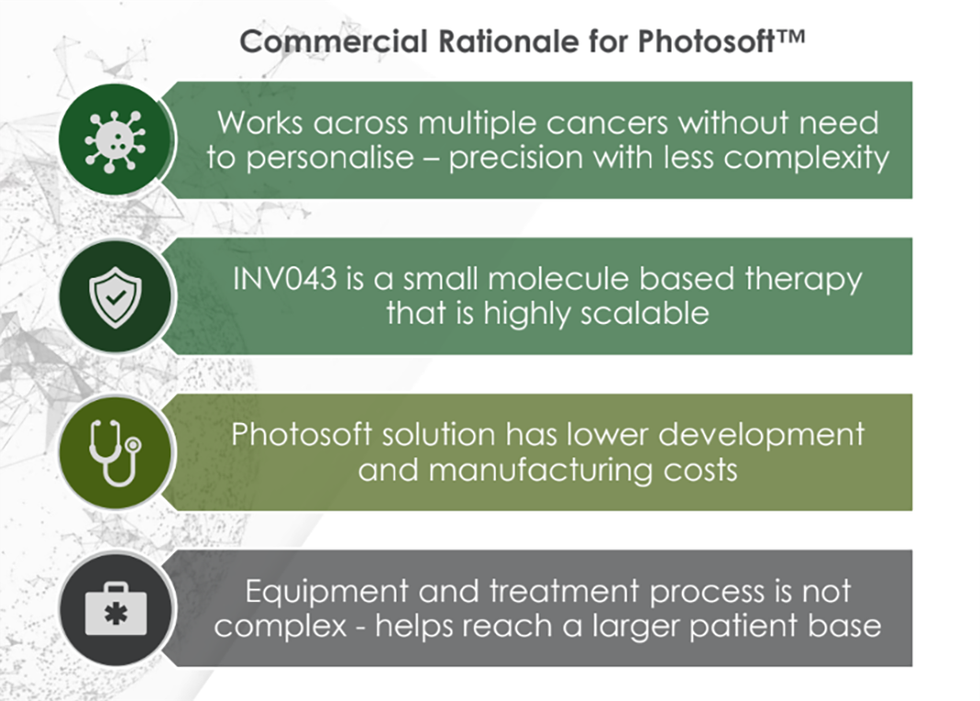The first and only FDA-approved intravenous immunoglobulin with two maintenance dosing options for CIDP
Pfizer Inc. (NYSE: PFE) today announced that the U.S. Food and Drug Administration (FDA) has approved the supplemental Biologics License Application (sBLA) for PANZYGA ® (Immune Globulin Intravenous [Human] ifas 10% Liquid Preparation) to treat adult patients with a rare neurological disease of the peripheral nerves called chronic inflammatory demyelinating polyneuropathy (CIDP). PANZYGA is the only intravenous immunoglobulin (IVIg) with two FDA-approved maintenance dosing options for CIDP, helping to meet the clinical needs of patients. PANZYGA can also be administered at infusion rates up to 12 mgkgmin.
"Each patient with CIDP has different treatment needs, and we have found that having one approved dosing option is not always optimal," said Angela Lukin, Global President, Hospital Business Unit, Pfizer Inc. "The approval of this new indication with additional dosing options helps address an unmet patient need by providing healthcare providers with the ability to choose an approved dose that's right for patients."
CIDP is a rare disorder of the peripheral nerves characterized by gradually increasing symmetrical motor and sensory loss and weakness associated with loss of deep tendon reflexes. It is caused by damage to the covering of the nerves, called myelin. The gradual onset of CIDP can delay diagnosis by several months or even years, resulting in significant nerve damage that may limit and delay the response to therapy. Most individuals will require long term treatment; nearly a third of CIDP patients will progress to wheelchair dependence if left untreated. Early recognition and proper treatment are critical in helping patients avoid a significant amount of disability.
The approval for this new indication was based on data from a prospective, double-blind, randomized, multi-center Phase 3 study in 142 patients diagnosed with CIDP. This Phase 3 study was the first and only IVIg CIDP treatment study to evaluate more than one maintenance dosing option. Efficacy, safety, and tolerability was observed during seven maintenance infusions at three-week intervals over a six-month period. The primary efficacy endpoint was the proportion of responders in the 1.0 g/kg PANZYGA treatment arm at six months relative to baseline. A responder was defined as a patient with a decrease of at least one point in the adjusted 10-point Inflammatory Neuropathy Cause and Treatment (INCAT) disability score. The primary endpoint was met with 80% of patients in the study achieving an INCAT response with the 1.0 g/kg dose. Dose-dependent efficacy was shown by several supporting endpoints, including a 92% response in adjusted INCAT score in the 2.0 g/kg dose arm. Dose-dependent responses were also demonstrated in the 1.0 g/kg and 2.0 g/kg dose arms in grip strength, Inflammatory Rasch-built Overall Disability Scale (I-RODS) and Medical Research Council (MRC) sum scores. PANZYGA was generally well tolerated. The most common adverse reactions (>5%) across all dosing arms were headache (15%), fever (14%), dermatitis (10%), and blood pressure increase (8%). During the study 11 patients (8%) received premedication.
PANZYGA was approved by the U.S. FDA in 2018 for the treatment of primary immunodeficiency (PI) in patients two years of age and older and chronic immune thrombocytopenia (cITP) in adults.
Pfizer Inc. and Octapharma AG are parties to a license agreement pursuant to which Pfizer is granted rights to market and commercialize PANZYGA in the U.S. Octapharma retains exclusive rights to commercialize this product globally outside of the U.S.
PANZYGA ® Indication and Usage
PANZYGA (Immune Globulin Intravenous [Human] - ifas) is indicated for the treatment of primary humoral immunodeficiency (PI) in patients 2 years of age and older; this includes, but is not limited to, congenital agammaglobulinemia, common variable immunodeficiency, X-linked agammaglobulinemia, Wiskott-Aldrich syndrome, and severe combined immunodeficiencies; chronic immune thrombocytopenia (cITP) in adults to raise platelet counts to control or prevent bleeding; and chronic inflammatory demyelinating polyneuropathy (CIDP) in adults to improve neuromuscular disability and impairment.
IMPORTANT SAFETY INFORMATION
WARNING: THROMBOSIS, RENAL DYSFUNCTION, AND ACUTE RENAL FAILURE
|
Contraindications
PANZYGA is contraindicated in patients who have a history of severe systemic hypersensitivity reactions, such as anaphylaxis, to human immunoglobulin and in IgA-deficient patients with antibodies against IgA and history of hypersensitivity.
Warnings and Precautions
Monitor renal function, including blood urea nitrogen and serum creatinine, and urine output in patients at risk of developing acute renal failure.
Hyperproteinemia, increased serum osmolarity, and hyponatremia may occur in patients receiving PANZYGA.
Aseptic meningitis syndrome may occur in patients receiving PANZYGA, especially with high doses or rapid infusion.
Hemolysis that is either intravascular or due to enhanced red blood cell sequestration can develop subsequent to PANZYGA treatments. Risk factors for hemolysis include high doses and non-O-blood group. Closely monitor patients for hemolysis and hemolytic anemia.
Monitor patients for pulmonary adverse reactions (transfusion-related acute lung injury [TRALI]).
Monitor blood pressure prior to, during, and following PANZYGA infusion.
Carefully consider the relative risks and benefits before prescribing the high dose regimen (for cITP) in patients at increased risk of volume overload.
PANZYGA is made from human plasma and may contain infectious agents, e.g. viruses and theoretically, the Creutzfeldt-Jakob disease agent.
Adverse Reactions
PI – The most common adverse reactions (≥5% study subjects) were headache, nausea, fever, fatigue, and abdominal pain.
cITP in adults – The most common adverse reactions (≥5% study subjects) were headache, fever, nausea, vomiting, dizziness, and anemia.
CIDP in adults – The most common adverse reactions reported in greater than 5% of subjects were: headache, fever, dermatitis, and blood pressure increase.
The risk information provided here is not comprehensive; please see full Prescribing Information, including BOXED WARNING, for PANZYGA available at: https://www.fda.gov/media/115397/download
Pfizer Inc.: Breakthroughs that change patients' lives
At Pfizer, we apply science and our global resources to bring therapies to people that extend and significantly improve their lives. We strive to set the standard for quality, safety and value in the discovery, development and manufacture of health care products, including innovative medicines and vaccines. Every day, Pfizer colleagues work across developed and emerging markets to advance wellness, prevention, treatments and cures that challenge the most feared diseases of our time. Consistent with our responsibility as one of the world's premier innovative biopharmaceutical companies, we collaborate with health care providers, governments and local communities to support and expand access to reliable, affordable health care around the world. For more than 170 years, we have worked to make a difference for all who rely on us. We routinely post information that may be important to investors on our website at www.pfizer.com . In addition, to learn more, please visit us on www.pfizer.com and follow us on Twitter at @Pfizer and @Pfizer_News, LinkedIn, YouTube and like us on Facebook at Facebook.com/Pfizer .
DISCLOSURE NOTICE: The information contained in this release is as of February 12, 2021. Pfizer assumes no obligation to update forward-looking statements contained in this release as the result of new information or future events or developments.
This release contains forward-looking information about PANZYGA ® (Immune Globulin Intravenous [Human] – ifas 10% Liquid Preparation) and a new indication in the U.S. for to treat adult patients with chronic inflammatory demyelinating polyneuropathy (CIDP), including their potential benefits, that involves substantial risks and uncertainties that could cause actual results to differ materially from those expressed or implied by such statements. Risks and uncertainties include, among other things, uncertainties regarding the commercial success of PANZYGA; the uncertainties inherent in research and development, including the ability to meet anticipated clinical endpoints, commencement and/or completion dates for our clinical trials, regulatory submission dates, regulatory approval dates and/or launch dates, as well as the possibility of unfavorable new clinical data and further analyses of existing clinical data; the risk that clinical trial data are subject to differing interpretations and assessments by regulatory authorities; whether regulatory authorities will be satisfied with the design of and results from our clinical studies; whether and when any drug applications may be filed for any other potential indications for PANZYGA; whether and when any such other applications may be approved by regulatory authorities, which will depend on a myriad factors, including making a determination as to whether the product's benefits outweigh its known risks and determination of the product's efficacy and, if approved, whether such product candidate will be commercially successful; decisions by regulatory authorities impacting labeling, manufacturing processes, safety and/or other matters that could affect the availability or commercial potential of PANZYGA; uncertainties regarding the impact of COVID-19 on Pfizer's business, operations and financial results; and competitive developments.
A further description of risks and uncertainties can be found in Pfizer's Annual Report on Form 10-K for the fiscal year ended December 31, 2019 and in its subsequent reports on Form 10-Q, including in the sections thereof captioned "Risk Factors" and "Forward-Looking Information and Factors That May Affect Future Results," as well as in its subsequent reports on Form 8-K, all of which are filed with the U.S. Securities and Exchange Commission and available at www.sec.gov and www.pfizer.com .
View source version on businesswire.com: https://www.businesswire.com/news/home/20210212005537/en/
Media Contact:
Eamonn Nolan
+1 (212) 733-4626
Eamonn.Nolan@Pfizer.com
Investor Contact:
Chuck Triano
+1 (212) 733-3901
Charles.E.Triano@Pfizer.com









